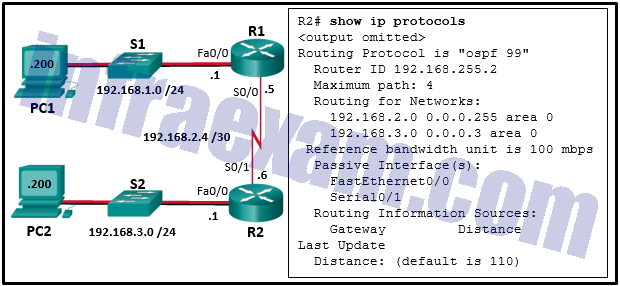Refer to the exhibit. A network administrator has configured OSPFv2 on the two Cisco routers. The routers are unable to form a neighbor adjacency. What should be done to fix the problem on router R2?

- Change the router-id of router R2 to 2.2.2.2.
- Implement the command no passive-interface Serial0/1.
- Implement the command network 192.168.2.6 0.0.0.0 area 0 on router R2.
- Implement the command network 192.168.3.1 0.0.0.0 area 0 on router R2.
| Explanation & Hint:
The exhibit shows that OSPF has been configured on router R2, and the output indicates that interface Serial0/1 has been set as passive. In OSPF, marking an interface as passive means that the router will not form OSPF neighbor adjacencies over that interface. However, since the goal is to form an OSPF adjacency between the routers connected by Serial0/1, the passive setting is preventing the adjacency from forming. To fix the problem and allow OSPF to form a neighbor adjacency on R2, the command that should be implemented is: no passive-interface Serial0/1This command will remove the passive interface status from Serial0/1, allowing OSPF neighbor relationships to be established on that interface. The other options are not relevant to the problem of forming neighbor adjacency as described in the context. |